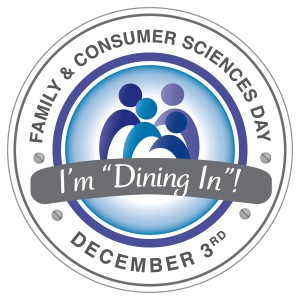
by Stephanie Herzog | Oct 11, 2019
Have you ever been bullied or know someone who has been bullied? I know I have. October is National Bullying Prevention Month. Each October since 2006, there has been a national effort to raise awareness about bullying and provide education and resources to try to prevent it. According to data from 2017, about 20% of youth ages 12-18 experienced bullying at school and nearly 30% reported cyberbullying during their lifetime. That is a lot of our country’s youth!
What Exactly is Bullying?
Bullying is unwanted aggressive behavior. Bullying must have a real or perceived power imbalance between the bully and the victim, where the bully uses their power to control or hurt their victim. The bullying behavior needs to be repeated over time, or at least have the potential to repeat over time.
There are three categories of bullying:
- Verbal bullying includes teasing, taunting, threats, or name-calling
- Social or relational bullying includes ignoring someone on purpose, ostracizing, spreading rumors, or embarrassing someone
- Physical bullying includes damaging belongings or harming another’s body such as spitting, hitting, pushing, rude gestures, or tripping

The constant and easy access of cell phones, social media, and the internet has increased the real dangers of cyberbullying. (Photo source: UF/IFAS)
Cyberbullying
Technology has changed the ways of bullying. Bullying is no longer only ‘picking on’ someone, making fun of them, calling them names, or ignoring them at school. The constant and easy access of cell phones, social media, and the internet has truly expanded bullying to an unthinkable, unending scale. There are many ways to bully someone online, including:
- Verbal attacks, mean messages, or rumors on social media accounts, online games such as Fortnite, or through email or text
- Releasing embarrassing or inappropriate pictures, GIFs, or videos online or through text (e.g. sexting)
- Creating fake profiles or hacking into someone’s account online in order to hurt that person
Perhaps one of the most dangerous things about cyberbullying is once something is posted online and is circulated, it’s very hard to permanently remove. This oftentimes makes escape from the bullying unusually difficult or even seemingly impossible. It’s so important to keep up with ways technology is advancing in order to protect ourselves from things like cyberbullying.
Effects of Bullying
The negative psychological effects of bullying are very real – for the bully, the victim, and those who may witness it.
For the bully, they have a greater risk of using substances, engaging in risky or violent behavior, being abusive in future relationships, committing crimes, and developing other external behavior problems.
Effects of bullying include low self-esteem, fear, loneliness, heartache, and potential physical illness. These effects put a widespread toll on the mental, physical, and social health of the victims and also those who witness bullying. The increased risk of using addictive and illegal substances, anxiety, depression, eating disorders or even becoming suicidal are to be taken seriously and should be treated appropriately. Seek out mental health professionals or physicians and consult with them on the best combination of treatment. These effects can last days, months, years, or even lifetimes depending on the person and the circumstance.
The Story of Amanda Todd
The story of Amanda Todd is an unfortunate real example of cyberbullying and how unforgiving and never-ending it can be. Amanda ultimately committed suicide to get away from it; she was only 15 years old. Her YouTube video, published in 2012 a month before she committed suicide, has 13.5 million views to date. To better understand the reality of bullying, please consider watching it or sharing it. However, viewer discretion is advised.
Bullying, harassment, discrimination, or any other type of negative, cruel, or harmful behavior is never okay or acceptable in any way. If you have been a witness of bullying or a bully, stand up to stop it! If you have been bullied or know someone who has, please seek help from caring professionals, family, or friends. Go-to resources are found below.
Additional Resources
Stop Bullying Now Hotline: 1-800-273-8255
- Available 24/7, managed by the U.S. Department of Health and Human Services
National Suicide Prevention Lifeline: 1-800-273-8255
- Available 24/7, there is an online chat option available here
The Trevor Project: 1-866-488-7386
- Available 24/7, suicide prevention help specifically for the LGBTQ+ community
- Texting and chat options are available here
National Eating Disorders Association: 1-800-931-2237
- Mon-Thu 9am-9pm, Fri 9am-5pm
The Cybersmile Foundation
STOMP Out Bullying
Stopbullying.gov
Sources
National Center for Educational Statistics, Indicators of School Crime and Safety Indicator 10: Bullying at School and Electronic Bullying, April 2019.
Cyberbullying Research Center
The Amanda Todd Legacy

by Melanie Taylor | Jan 18, 2019

Be mindful and enjoy the moment.
Photo source: UF/IFAS Northwest District
Now that the busy holiday season is over, it is time not only to reflect on the past, but to prepare and refocus for the New Year ahead. As we focus on the New Year, it is always refreshing to have a clean slate. As the year begins to unfold, there are tips to help you manage your day-to-day stress levels. It begins with mindfulness.
What is mindfulness? Mindfulness means paying attention in a particular way; on purpose, in the present moment, and nonjudgmentally.” –Dr. Jon Kabat-Zinn (1991)
Mindfulness is best thought of as a way of being rather than an activity in and of itself. Almost any activity can be carried out with mindful awareness.
Mindful awareness has three key features:
Purpose – mindfulness involves intentionally and purposefully directing your attention rather than letting it wander.
Presence – mindfulness involves being fully engaged with and attentive to the present moment. Thoughts about the past and future that arise are recognized simply as thoughts occurring in the present.
Acceptance – mindfulness involves being nonjudgmental toward whatever arises in the moment. This means that sensations, thoughts, and emotions are not judged as good or bad, pleasant or unpleasant; they are simply noticed as “happening,” and observed until they eventually pass (Naik, Harris, and Forthun 2016).
Mindfulness is a mind-body practice that has been found to benefit both psychological and physical health. The primary psychological change that occurs during mindfulness practice is an increased awareness of thoughts, feelings, and sensations in the present moment. Over time, mindfulness practice can help you to become aware of the space between noticing experiences and reacting to them by letting you slow down and observe the processes of your mind (Black 2010). The ultimate goal of mindfulness practice is for you to take advantage of this space so you can make more intentional decisions – to wake up from living life on autopilot, based on unproductive habits of mind (Black 2010; Walach et al. 2007).
According to the American Psychological Association, some empirically supported benefits of mindfulness include the following (Davis & Hayes 2011):
Psychological Benefits
Increased awareness of one’s mind
Significantly reduced stress, anxiety, and negative emotions
Increased control over ruminative thinking (a major cause and symptom of depression and anxiety)
Increased mental flexibility and focus
More working memory
Decreased distracting thoughts
Decreased emotional reactivity
Increased capacity for intentional, responsive behaviors
Increased empathy, compassion and conscientiousness of others’ emotions
Physiological Benefits
Enhanced immune system functioning
Increased brain density and neural integration in areas responsible for positive emotions, self-regulation, and long-term planning
Lowered blood pressure
Lowered levels of blood cortisol (a major stress hormone)
Greater resistance to stress-related illnesses such as heart disease
Spiritual Benefits
Increased self-insight and self-acceptance
Increased acceptance of others
Increased compassion and empathy
Increased sense of morality, intuition, and courage to change
Increased control over automatic behaviors
Increased self-discipline
The question is: how many of us would like to benefit from mindfulness if it provides these positive benefits? All of us should strive to lower our stress level and enjoy our daily lives with a more positive attitude and more attentiveness. So, how can we incorporate this into our lives? The majority of this practice is about familiarizing yourself with what it feels like to be mindful, and getting better at “remembering” to maintain mindful awareness.
Experiment with creating your own mindfulness practices throughout your day. Being mindful of the sensation on the soles of your feet as you walk to your car or the taste and texture of your morning coffee can transform routine moments into deeply satisfying practices. However, having a ritualized and structured practice can be beneficial. To find out more about practicing mindfulness and how to incorporate a more structured practice in your life visit http://edis.ifas.ufl.edu, Publication # FCS2335 – Mindfulness: An Introduction.
Source: Mindfulness: An Introduction. http://edis.ifas.ufl.edu. Publication # FCS2335.

by Melanie Taylor | Dec 7, 2018
As the holiday season quickly approaches, many people are filled with extra holiday cheer and enthusiasm. Some are jolly, but still overwhelmed with all of the activities, decorating, and shopping that needs to be completed. Then, there are those that find the holiday season as a reminder of things such as, the death of a loved one, family feuds, divorce, and the list goes on. If you are feeling this way here are a few tips to make getting through the season a little bit easier.
1. Feel your emotions – Many people want to suppress their sadness or anxiety, but this only makes it worse. We are all allowed to grieve, cry and feel mad at times. If you feel this way, let yourself feel your feelings. You will feel better once you have accepted and worked through the emotions. You also do not have to force yourself to feel happy just because it is the holiday season.
2. Reach out to others – Instead of secluding yourself spend time with others, whether it is at church, a community group or with family and friends. Spending time with others and socializing is good for the spirit. In addition, there are tons of volunteer opportunities during the holidays. Try something new and volunteer your time to a worthy cause. You will feel great about helping others and contributing to the cause. Research such as this one conducted by UnitedHealth Group commissioned a national survey of 3,351 adults and found that the majority of participants reported feeling mentally and physically healthier after a volunteer experience. The research showed:
- 96% reported that volunteering enriched their sense of purpose in life
- 94% of people who volunteered in the last twelve months said that volunteering improved their mood
- 80% of them feel like they have control over their health
- 78% of them said that volunteering lowered their stress levels
- 76% of people who volunteered in the last twelve months said that volunteering has made them feel healthier
- About a quarter of them reported that their volunteer work has helped them manage a chronic illness by keeping them active and taking their minds off of their own problems
- Volunteering also improved their mood and self-esteem
3. Be realistic – Realize that times and traditions change as families grow and age. Do not focus on everything having to be the same every year. Be willing to accept changes, such as adult children may not be able to attend the family gathering, so utilize technology and talk through video conferencing, share pictures on email and/or Facebook. Find a way to make it work.
4. Set aside differences for everyone’s sake. Aim to accept family and friends the way they are, even if they do not meet your expectations. Leave grievances at the door for the day and enjoy your family and friends. Share those grievances and talk at a more appropriate and private time. Also, remember they could be feeling the stress of the holiday too. So, be patient if someone is grouchy or sad as you celebrate. You may both be feeling the same way.
5. Learn to say no – Be realistic in the number of activities you and your family can participate. Do not feel guilty because you cannot attend every party and event you are invited too. Graciously decline an invite and share that your schedule is booked, but thank them for thinking of you. A host does not expect that everyone will attend their parties.
6. Take a breather as needed – If you start to feel overwhelmed with anxiety, anger or sadness take a few minutes to be alone. Take 15 minutes to spend in the quiet to reduce the stress and clear your mind. For example: listen to soothing music, do a few mindful breathing exercises to slow yourself down or read a book to temporarily escape the stress.
7.Seek professional help as needed – there are times when the emotions are just too overwhelming to sort through on our own. If you continue to feel sad, anxious, angry, etc. there is absolutely no shame in seeking the help of a doctor or mental health professional. It will only help you work through your feelings with a non-bias person. Helping yourself feel better will improve your quality of life and those around you.
Do not let the idea of the holidays turn you into a modern day Ebenezer Scrooge. Learn to take care of yourself first. Learn your limitations and accept them. Do not let others’ expectations overwhelm you. Just remember when you start feeling extreme levels of emotions and/or stress take a few deep breathes and remind yourself to relax and feel the moment. Be mindful of your surroundings and remind yourself of your many blessings, even when going through difficult times. Make it your personal goal to feel your feelings and enjoy what you can about the holiday season, whether it is the twinkling lights, time with friends and family, the food or any of the many special holiday traditions.

Aim to find JOY during this holiday season.
Sources:
Stress, depression and the holidays: Tips for coping. www.mayoclinic.org,
Signs and Symptoms of Depression http://edis.ifas.ufl.edu/pdffiles/FY/FY10000.pdf
Depression and Older Adults http://edis.ifas.ufl.edu/pdffiles/FY/FY95200.pdf

by Dorothy C. Lee | Dec 3, 2018

Holiday Stress
Photo source: Dorothy Lee
Tis the Season Merry and Bright:
From Thanksgiving to New Year’s Eve there are greater incidences of stress and tension related headaches and migraines. Family stresses, long shopping lines, and unrealistic expectations are enough to trigger tension headaches even in people who are not headache prone. To avoid these aches and pains a strategic plan may be necessary.
Planning is crucial not only at the holidays but throughout the year. Having a plan and being organized makes everything easier and more manageable. The key is to start early and don’t wait until December. This is where Christmas in July becomes useful thinking.
The following are some tips to help avoid stress during the holiday season. Make a schedule that includes all tasks you have to complete, how long you think each task will take, and when each task needs to be completed. This is why Santa makes a list and checks it twice.
- Start shopping early to reduce time wasted in long lines with early-bird hour sales
- To avoid long period of times wrapping, shop in stores where gift wrap is free
- Shop on-line while drinking your coffee in your pajamas
- Track your purchases in a notebook or in note section of your cell phone
- Prioritize your social events and don’t spread yourself too thin
- Use your computer for online postal mailing to avoid lines at the post office
- Instead of mailing gifts, order gifts on-line, and have gifts directly sent to gift recipient
- Practice relaxation and stretching to reduce stress
- Establish a spending limit and stick to it
Be realistic about how much you can do as nobody likes a cranky Santa. By following these tips, you will be as jolly as old Saint Nick.
Enjoy the holiday season with family and friends as it is the greatest gift you can give yourself. And remember, laugher is the best medicine for stress!
Happy Holidays!

by Angela Hinkle | Nov 26, 2018

FCS Dine In Day December 3
Is your busy, busy life making it difficult to spend time eating a meal at home with your family? Research tells us families are healthier in so many ways when they eat at home together. Maybe these favorite family meals from some of our readers will give you some inspiration.
Italian Night
My mother’s chicken cacciatore. She’s Italian and a great cook. She makes it with boneless chicken breasts, rice, sliced peppers, onions, tomatoes, and of course, garlic. It is so good and probably healthy. But maybe not, since I eat way too much of it. Friends and family come together on “Italian Night” to enjoy this and other Italian specialties. Molto delicioso. Rick W.
My favorite meal was always when my mom made homemade spaghetti sauce for pasta. Wow, that’s good stuff. When I brought my girlfriend home, it became one of her favorite meals too. Thanks mom! Alex H.

Father and son set the dinner table. Photo Source: Wendy Meredith
Home Away from Home Meal
My favorite family meal was pork chops, broccoli, mashed potatoes, rolls and sweet tea, because my son, (my first born), cooked his first meal in his first home away from home at the age of 21 and invited our family to dinner. He was always the one out of five children who liked to have everyone in the family sit at the dining room table together and enjoy a meal as often as possible. Our lives consisted of football, cheerleading, church events, ballet, gymnastics, soccer, school events, jobs, etc. Our family of seven was a very busy family and always running here and there, but somehow due to the persistency of our son, we managed to have one or two meals a week together as a family. I was a very happy and proud mom when I received the invite to have dinner that night. The food was delicious, but the fellowship during “My Favorite Family Meal” was something I will remember and cherish forever. Wendy M.
Let Them Eat Cake or Bread
Celebrations were very special in my family. Every year on my birthday, my grandmother would always cook my favorite food and bake my favorite cake (Red Velvet – Yum). When I was young I always thought it was about the food. But it was about so much more; we learned about manners and etiquette, and family coming together to share old traditions and make new ones. Whenever I see a red velvet cake or smell one baking, it brings back happy memories. I’m transformed back to when I was a 10 year old girl. Dorothy L.
Growing up on a farm in Michigan, I’ve got a lot of good memories involving food! From making butter in a churn, to picking blackberries in the woods for Mom to make pie, to getting ripe tomatoes from the garden for a tasty bacon and tomato sandwich and many more. I consider myself very fortunate to have grown up knowing exactly where our food comes from!
A favorite and happy memory is Mom making bread on cold days, letting the loaves rise by the heat registers, then baking it in the oven. The whole house smelled like delicious bread. Once it was done, Mom would cut it while it was still warm and give us thick slices with warm, melting butter on it! Cheryl V.
December 3rd is Dine In Day. It’s a chance to make a commitment to have a meal at home with family. So, make the decision to eat with your family at home this December 3rd.

FCS Dine In Day












